#maria ii de portugal
Text

Queen Maria II da Gloria. By Joannes Paulus.
#reino de portugal#casa de bragança#kingdom of portugal#house of braganza#full length portrait#maria ii da gloria#rainha de portugal#queen of portugal#joannes paulus#full-length portrait#maria ii de portugal
5 notes
·
View notes
Text

Manuel Maria Filipe Carlos Amélio Luís Miguel Rafael Gabriel Gonzaga Xavier Francisco de Assis Eugénio, King Manuel II of Portugal
British vintage postcard
#vintage#tarjeta#francisco#maria#xavier#briefkaart#manuel maria filipe carlos amélio luís miguel rafael gabriel gonzaga xavier francisco de assis eugénio#amlio#postcard#photography#gonzaga#assis#postal#gabriel#carte postale#filipe#sepia#eugnio#ephemera#portugal#historic#british#manuel ii#carlos#king#ansichtskarte#postkarte#rafael#manuel#postkaart
5 notes
·
View notes
Text
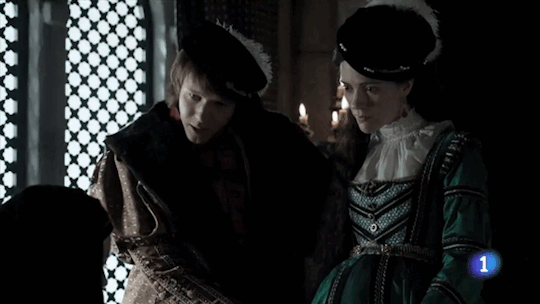



Philip II + touching his wives' pregnant bellies
#philip ii of spain#maria manuela of portugal#mary tudor#elisabeth of valois#anna of austria#i know mary wasn't pregnant#but they thought she was so it still counts#carlos rey emperador#reinas#la princesa de eboli#period drama
52 notes
·
View notes
Photo
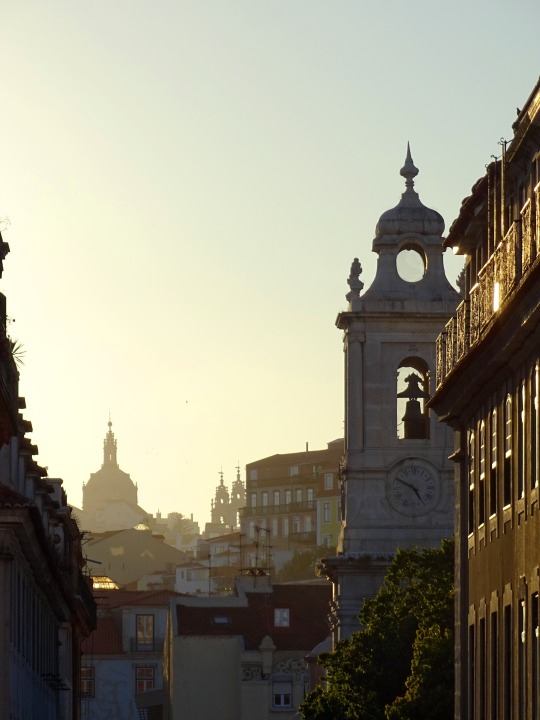
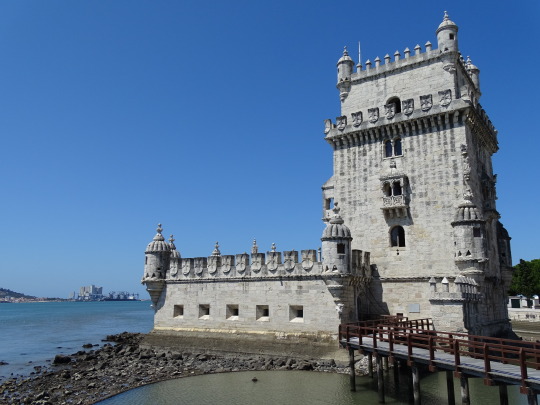
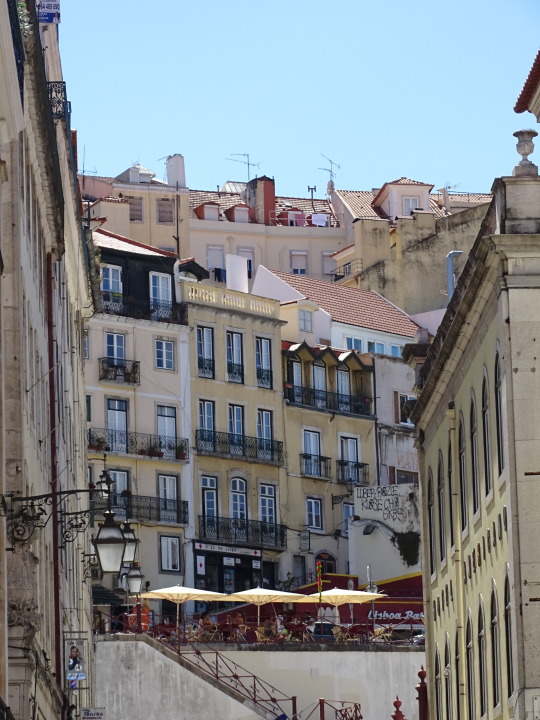
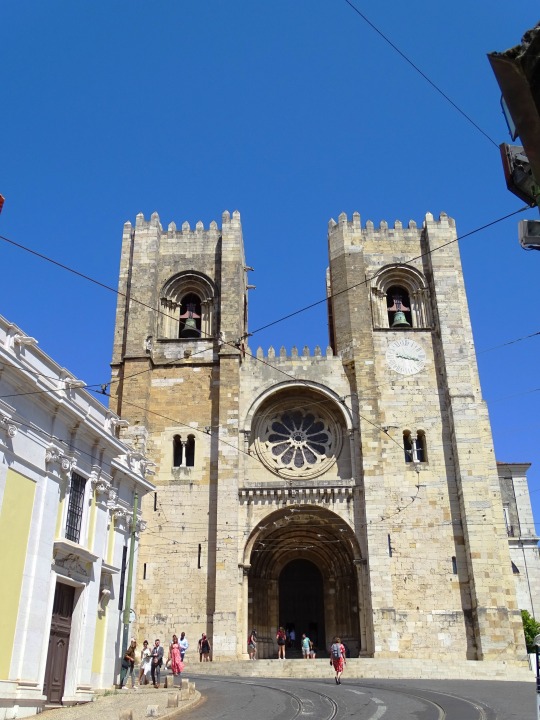
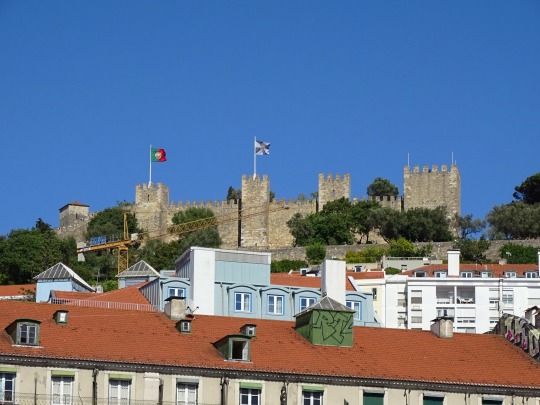
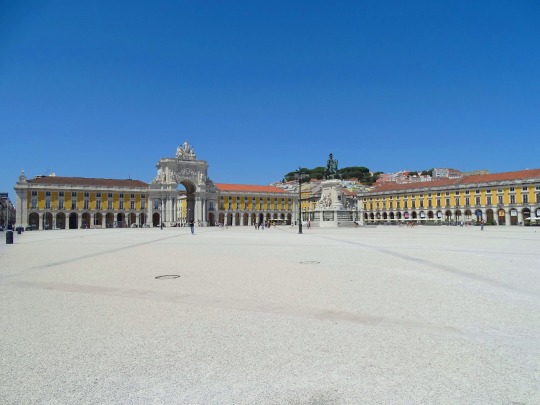

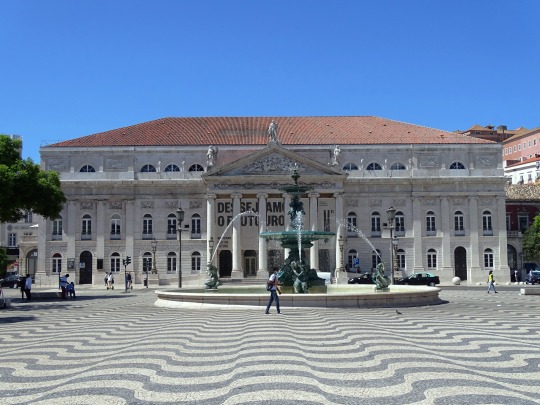
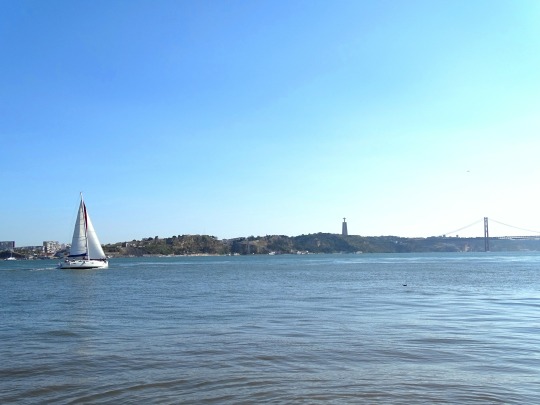
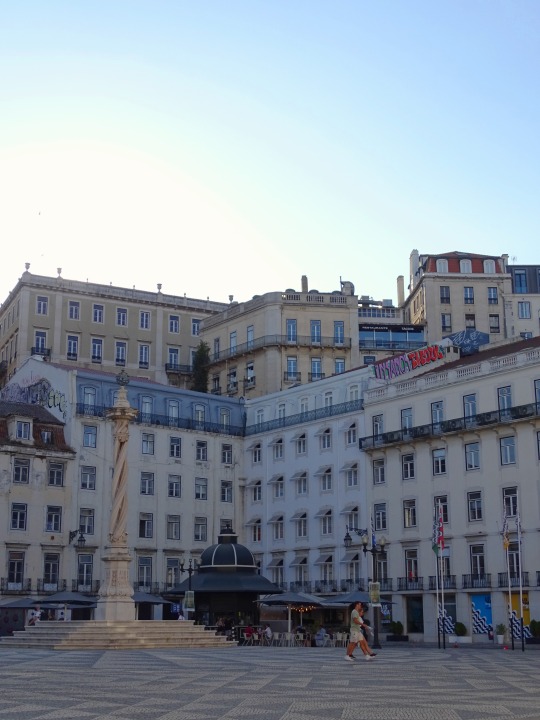
The 1761 Lisbon earthquake stroke off the Iberian Peninsula with an estimated magnitude of 8.5 on March 31, 1761.
#Belém Tower#Tejo River#Lisbon earthquake#Lisbon Cathedral#Portugal#São Jorge Castle#Lisboa#summer 2021#original photography#vacation#travel#architecture#cityscape#tourist attraction#landmark#Praça do Comércio#Igreja de São Paulo#D. Maria II National Theatre#Praça do Município#31 March 1761#anniversary#Portugese history
5 notes
·
View notes
Text









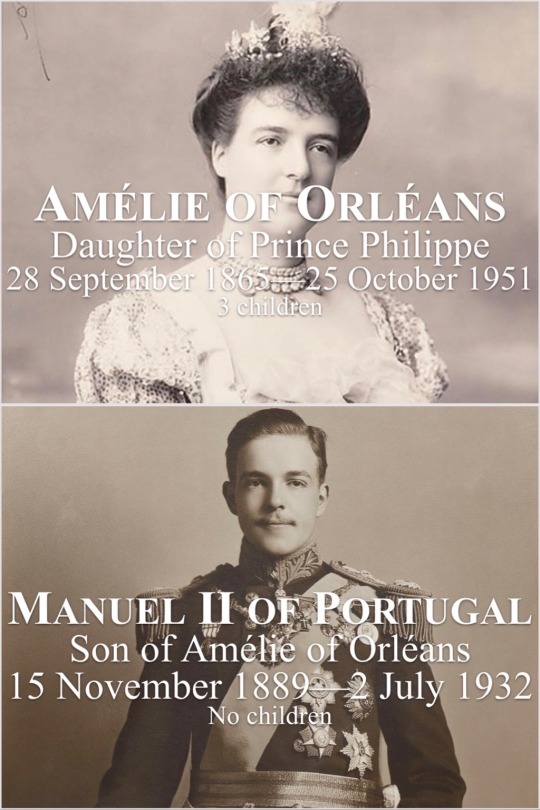
Descendants of the Tudors
#descendants of the tudors#henry vii#margaret tudor#james v#mary queen of scots#james vi and i#elizabeth stuart#charles i louis#elizabeth charlotte madame palatine#philippe ii duke of orléans#charlotte aglaé d’orléans#maria teresa felicitas d’este#louise marie adélaïde de bourbon#louis philippe i#ferdinand philippe duke of orléans#prince philippe#amélie oforléans#manuel ii of portugal
2 notes
·
View notes
Text
With two days left to submit nominees, here is where the list stands:
France:
Jean Lannes
Josephine de Beauharnais
Thérésa Tallien
Jean-Andoche Junot
Joseph Fouché
Charles Maurice de Talleyrand
Joachim Murat
Michel Ney
Jean-Baptiste Bernadotte (Charles XIV of Sweden)
Louis-Francois Lejeune
Pierre Jacques Étienne Cambrinne
Napoleon I
Marshal Louis-Gabriel Suchet
Jacques de Trobriand
Jean de dieu soult.
François-Étienne-Christophe Kellermann
Louis Davout
Pauline Bonaparte, Duchess of Guastalla
Eugène de Beauharnais
Jean-Baptiste Bessières
Antoine-Jean Gros
Jérôme Bonaparte
Andrea Masséna
Antoine Charles Louis de Lasalle
Germaine de Staël
Thomas-Alexandre Dumas
René de Traviere (The Purple Mask)
Claude Victor Perrin
Laurent de Gouvion Saint-Cyr
François Joseph Lefebvre
Major Andre Cotard (Hornblower Series)
Edouard Mortier
Hippolyte Charles
Nicolas Charles Oudinot
Emmanuel de Grouchy
Pierre-Charles Villeneuve
Géraud Duroc
Georges Pontmercy (Les Mis)
Auguste Frédéric Louis Viesse de Marmont
Juliette Récamier
Bon-Adrien Jeannot de Moncey
Louis-Alexandre Berthier
Étienne Jacques-Joseph-Alexandre Macdonald
Jean-Mathieu-Philibert Sérurier
Catherine Dominique de Pérignon
England:
Richard Sharpe (The Sharpe Series)
Tom Pullings (Master and Commander)
Arthur Wellesley, 1st Duke of Wellington
Jonathan Strange (Jonathan Strange & Mr. Norrell)
Captain Jack Aubrey (Aubrey/Maturin books)
Horatio Hornblower (the Hornblower Books)
William Laurence (The Temeraire Series)
Henry Paget, 1st Marquess of Anglesey
Beau Brummell
Emma, Lady Hamilton
Benjamin Bathurst
Horatio Nelson
Admiral Edward Pellew
Sir Philip Bowes Vere Broke
Sidney Smith
Percy Smythe, 6th Viscount Strangford
George IV
Capt. Anthony Trumbull (The Pride and the Passion)
Barbara Childe (An Infamous Army)
Doctor Maturin (Aubrey/Maturin books)
Scotland:
Thomas Cochrane
Colquhoun Grant
Austria:
Klemens von Metternich
Friedrich Bianchi, Duke of Casalanza
Franz I/II
Archduke Karl
Marie Louise
Franz Grillparzer
Wilhelmine von Biron
Poland:
Wincenty Krasiński
Józef Antoni Poniatowski
Józef Zajączek
Maria Walewska
Władysław Franciszek Jabłonowski
Adam Jerzy Czartoryski
Antoni Amilkar Kosiński
Zofia Czartoryska-Zamoyska
Stanislaw Kurcyusz
Russia:
Alexander I Pavlovich
Alexander Andreevich Durov
Prince Andrei (War and Peace)
Pyotr Bagration
Mikhail Miloradovich
Levin August von Bennigsen
Pavel Stroganov
Empress Elizabeth Alexeievna
Karl Wilhelm von Toll
Dmitri Kuruta
Alexander Alexeevich Tuchkov
Barclay de Tolly
Fyodor Grigorevich Gogel
Ekaterina Pavlovna Bagration
Prussia:
Louise von Mecklenburg-Strelitz
Gebard von Blücher
Carl von Clausewitz
Frederick William III
Gerhard von Scharnhorst
Louis Ferdinand of Prussia
Friederike of Mecklenburg-Strelitz
Alexander von Humboldt
Dorothea von Biron
The Netherlands:
Ida St Elme
Wiliam, Prince of Orange
The Papal States:
Pius VII
Portugal:
João Severiano Maciel da Costa
Spain:
Juan Martín Díez
José de Palafox
Inês Bilbatua (Goya's Ghosts)
Haiti:
Alexandre Pétion
Sardinia:
Vittorio Emanuele I
Denmark:
Frederik VI
Sweden:
Gustav IV Adolph
11 notes
·
View notes
Text

The Ducal Wittelsbach family and their relatives, early 1890s. From left to right, standing: Karl Theodor, Duke in Bavaria, Duchess Elisabeth in Bavaria, Archduchess Elisabeth Amalie of Austria, Duchess Sophie Adelheid in Bavaria, Archduchess Maria Annunziata of Austria, Princess Maria Immacolata of Bourbon-Two Sicilies, Duchess Marie Gabrielle in Bavaria.
Sitting: Archduchess Maria Teresa of Austria (née Infanta of Portugal), King Francesco II of the Two Sicilies, Queen Marie Sophie of the Two Sicilies (née Duchess in Bavaria)
Via As Infantas de Bragança e a Sua Descendência - História das Filhas de D. Miguel by Dativo Salvia Ocaña
#look what i found completely by chance! the quality isn't very good because it's from the book's preview#francesco died in december of 1894 so the picture is from before that date#but definetly 1890s because. puff sleeves#(also the author misidentifies maria teresa as her sister maria josé and maria annunziata as mathilde countess of trani)#karl theodor duke in bavaria#queen elisabeth of the belgians#elisabeth amalie of austria princess of liechtenstein#sophie in bavaria countess of toerring jettenbach#archduchess maria annunziata of austria#maria immacolata of bourbon-two sicilies princess of saxony#marie gabrielle in bavaria princess of bavaria#maria teresa of braganza archduchess of austria#francesco ii of the two sicilies#queen marie sophie of the two sicilies#house of wittelsbach#house of bourbon two sicilies#house of braganza
7 notes
·
View notes
Photo

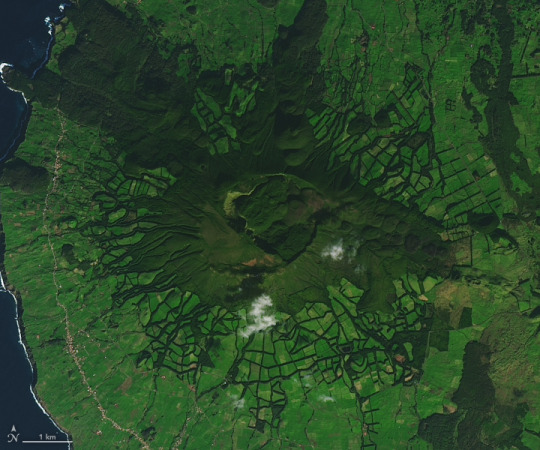
Terceira Island is one of nine volcanic islands in the Azores archipelago. The island straddles the Mid-Atlantic Ridge at a triple junction, an uncommon type of plate boundary where three divergent ridges meet.
Lying in the middle of the Atlantic Ocean about 1,400 kilometers (870 miles) off Portugal’s coast, the Azores archipelago is an autonomous region comprised of nine islands and home to almost a quarter million people. The islands are clustered in three groups in a chain spanning 600 kilometers (370 miles) across the Mid-Ocean Ridge. The westernmost island group lies on the North American tectonic plate, while the central and eastern groups lie on the Eurasian plate.
The islands of the Azores began to form about 10 million years ago over a mantle hotspot, similar to the formation of the Hawaiian Islands. However, unlike Hawai'i, which lies in the middle of a tectonic plate, the Azores lie on the edge.
The North American, Eurasian, and African plates meet to form the Azores triple junction— an uncommon type of plate boundary where three divergent ridges meet. (Most triple junctions involve a subduction zone where plates converge.) The North American and Eurasian plates are moving apart at a rate of 2 to 5 centimeters (0.75 to 2 inches) per year, an average speed for a spreading center. The Eurasian and African plates, however, are diverging at a hyperslow rate of 2 to 4 millimeters (0.08 to 0.16 inches) per year along the 550-kilometer (340-mile) Terceira Rift.
The rift passes through the island of Terceira, shown in the above image, which was acquired on January 3, 2020, by the Operational Land Imager (OLI) on Landsat 8. This 400-square-kilometer island in the central Azores first formed about 400,000 years ago. At the western end, Serra de Santa Bárbara rises to the island’s highest point at 1,021 meters (3,350 feet) above sea level.
Nearly a quarter of the island, which is dominated by forests and grasslands, has been designated as protected nature reserves. These include Biscoito da Ferraria Natural Forest Reserve in the north and Serra de Santa Bárbara in the west.

This detailed view shows the volcanic features of Serra de Santa Bárbara. The peak includes a double caldera, which formed from summit collapses 25,000 and 15,000 years ago. Also visible are small lava domes that formed on the eastern flank in 1761 during the last volcanic eruption to occur on land on Terceira.
The flanks of the volcano are covered by agricultural fields and pastures. The Azores are famous for the production of wine and tea, as well as cattle, which were brought by settlers in the 15th century. When the armadas of the Iberian empires ruled the seas, the Azores were a port of respite and resupply for ships in the mid-Atlantic. This was made possible by a deep-water anchorage at Angra do Heroísmo (“Bay of Heroism”). The harbor is sheltered by Monte Brasil, an extinct, 200-meter-tall volcanic cone attached to the south shore of the island. The second-largest town is Praia da Vitória (“Beach of Victory”). Both towns were named by Queen Maria II in the early 1830s to commemorate victories in the Portuguese civil war.
The island’s most recent volcanic activity occurred underwater on the Serreta Volcanic Ridge, which lies about 10 kilometers (6 miles) west of the island. That eruption started in December 1998 and continued through March 2000. During this eruption, a submarine plume emitted basalt balloons. These hot blobs of basaltic lava contain volcanic gases that expand, causing the lava balls to inflate and float to the surface. Once the gas dissipates and the lava is quenched by seawater, the newly formed igneous rocks sink back to the seafloor.
NASA Earth Observatory images by Lauren Dauphin, using Landsat data from the U.S. Geological Survey. Story by Sara E. Pratt.
188 notes
·
View notes
Photo




Portraits of the four daughters of Pedro I and Maria Leopoldina of Austria, done in 1830 by Simplício Rodrigues de Sá.
First is 11 year old Maria II of Portugal, and next to her is 8 year old Princess Januaria. On the bottom row are 7 year old Paula in white, followed by 6 year old Francisca in blue.
#maria II#Maria Leopoldina of Austria#januaria of brazil#paula of brazil#Francisca of Brazil#pedro i#long live the queue#Simplício Rodrigues de Sá
34 notes
·
View notes
Text
Introduction
Do you have opinions on the Serene House of Bragança (or Braganza) Do you wish to join the Brigantine Dynasty as it streches from East Timor to Brazil. Do you wish to eat Caldo Verde in a hot day in Portugal. Do you enjoy seeing drama, plotting, consorts more interesting than their Bragança husbands and the glory that is coming to Brazil? If so this defunct house of rulers that has had claimants and candidates to the thrones of Greece and Poland, as well as Monarchs of Portugal and royal consorts that have provided Monarchs such as Ferdinand of Romania? Dilettantes including the Infante Manuel de Bragança? and of course the Glorious Kings of Portugal and the Emperors of Brazil? If so, come to Brazil Join the tournament to discover the best Bragança!
Listen we may not be as dramatic as the Habsburgs or the Bourbons, but in terms of drama, we are the little house that could (so much drama (the War of the Brothers, the scheming of Carlota Joaquina, João V and his strong love of the catholic church)
Rules:
Who will be included in your lists? Much like notable brackets of Central Europe, we will include unconventional figures who may technically be considered members of other dynasties including *sighs*...at least a few Hohenzollerns (But unlike the @best-hohenzollern-ruler bracket, these will be ROMANIAN HOHENZOLLERNS; which is better).
We will also include the consorts from other royal families whose ambitions, intellect, and force of will may have outshone their admittedly mediocre Bragança spouses (Carlota Joaquina of the Bourbons is fascinating as is Maria Leopoldina of Austria)
Is propaganda encouraged?
Absolutely, as Lilia Schwarcz shows for Pedro II of Brazil, propaganda and pageantry are essential for the construction of the Bragança dynasty and monarchy! As such, It is also essential for this bracket!
Why is everyone a Pedro or João?
Hey, those are perfectly good names....but we also have two Marias who reigned in their own right (Actually, a lot more Marias in this bracket!) We also have some Afonsos
What regnal numbers will you be using?
Honestly, we will be using the Portuguese regnal numbers up until Pedro II of Brazil, who will have emperor in his title to distinguish him (Pedro I of Brazil/ IV of Portugal will have both)/ We will also include a few dukes.
Which language will you be using for the names?
Portuguese....do you really want to deal with a bunch of Johns and Peters?
How would you like it if, say a Habsburg Bracket, called Franz Joseph
Francisco José? It would be weird.
What is your relation to @best-hohenzollern-ruler, @best-habsburg-monarch, and the @best-bourbon-monarch?
Much like the Duke João of Braganza ( the future King João IV of Portugal) we bravely broke off from the @best-habsburg-monarch's bracket to form our own path! However, as is our want, we deeply appreciate the Habsburgs, the Bourbons, and the Hohenzollerns. Thus, we have maintained our propensity to intermarry into each of these families and their membership has joined us as well. So @best-hohenzollern-ruler @best-bourbon-monarch and @best-habsburg-monarch, friends? Also, @rulers-of-poland-tournament, Infante Manuel de Bragança really thinks y'all are swell!
10 notes
·
View notes
Photo

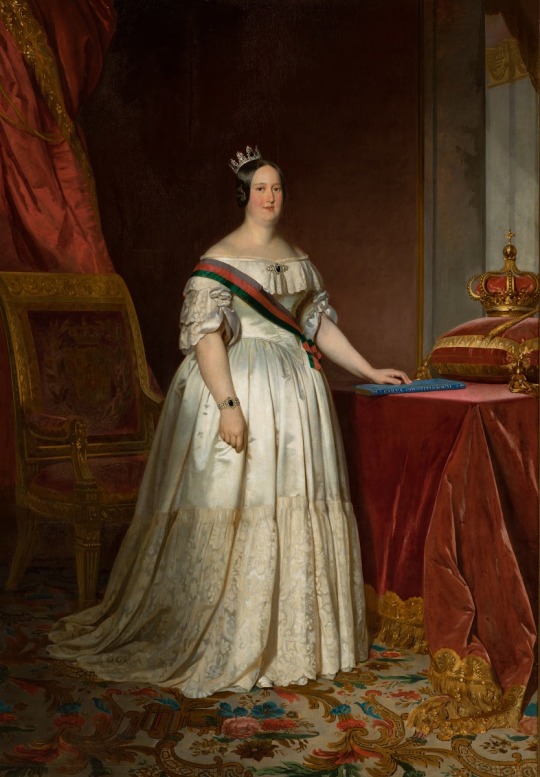




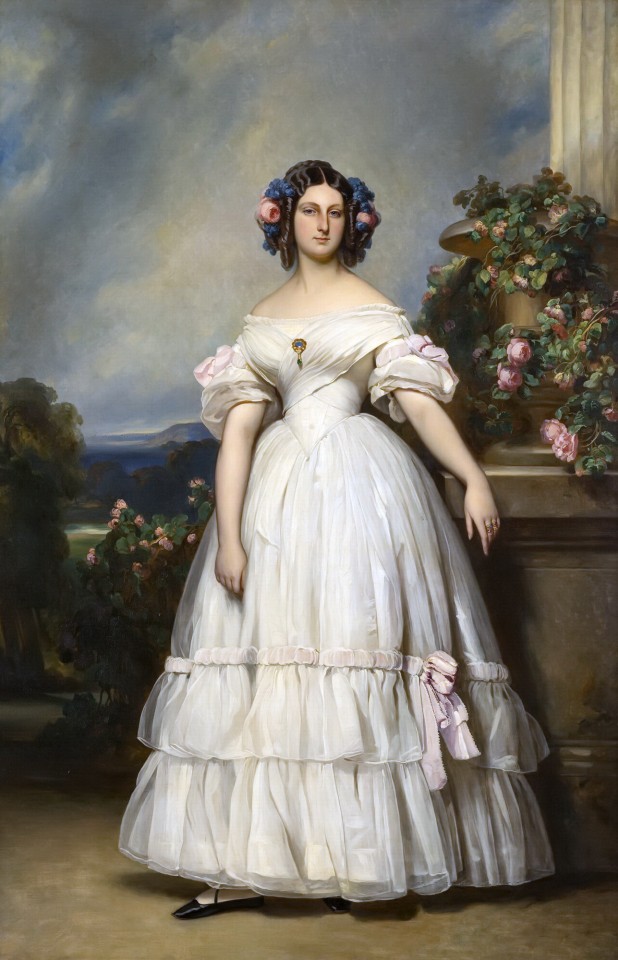



1846 fashion in pictures -
Top: 1846 Queen Victoria at the Age of 27 Years by ? (was for sale by Boris Wilnitsky). Image cropped to remove shadowed areas along the left, top, and right edges. Print, spots, & flaws removed w Pshop 1143X1953 @72 584kj.
Second row left: 1846 Rainha D. Maria II by Ferdinand Krumholz (Palácio da Ajuda - Ajuda parish, Lisboa, Portugal). From Wikimedia 834X1200 @72 325kj.
Second row right: 1846 Maria Nikolaievna by Carl Timoleon von Neff (location ?). From liveinternet.ru/users/lara_rimmer/post458270808/ 1000X1342 @96 369kj.
Third right: 1846 Prinses Marianne van Oranje-Nassau by Jan Philip Koelman (Geschiedkundige Vereniging Oranje-Nassau/Historical Society of Orange-Nassau, Paleis Het Loo - Den Haag, Zuid Holland, Netherlands). From Wikimedia 1508X2000 @96 498kj.
Fourth row left: 1846 Adriana Wilhelmina Clara Hooft by Jan Baptist van der Hulst (Frans Hals Museum - Haarlem, Noord-Holland, Netherlands). From history-of-fashion.tumblr.com/image/136328711994 900X1186 @72 474kj.
Fourth row right: 1846 Lady Fitzharris by Richard James Lane after Edwin Landseer (British Museum). From their Web site 1927X2500 @300 1.1Mj.
Fifth row: 1846 Princess Clementine of Orleans, Princess of Saxe-Coburg-Gotha by Franz Xaver Winterhalter (Châteaux de Versailles et de Trianon - Versailles, Île-de- France, France). From gallerix.ru/storeroom/1941543836/N/2028134133/ 1287X1998 @72 607kj.
Sixth row left: 1846 Augustine-Modeste-Hortense Reiset by Jean Auguste Dominique Ingres (Fogg Museum, Harvard University - Cambridge, Massachusetts, USA). From Wikimedia 1855X2295 @95.19 912kj.
Sixth row right: 1846 María Francisca de la Gándara, Dowager Countess of Calderón by Vicente López y Portaña (Prado). From their Web site ©Museo Nacional del Prado 1475X1920 @96 876kj.
Seventh row: 1846 Augusta Großherzogin von Mecklenburg-Strelitz (1822-1916, née Princess of Cambridge) by Franz Xaver Winterhalter (Royal Collevtion). From Wikimedia 2480X2933 @150 1.1Mj.
#1846 fashion#early Victorian fashion#Biedermeier fashion#Louis-Philippe fashion#Queen Victoria#poke bonnet#Maria II of Portugal#Ferdinand Krumholz#V waistline#Maria Nikolaievna#Carl Timoleon von Neff#lace head scarf#Marianne of the Netherlands#Jan Philip Koelman#high neckline#Adriana Wilhelmina Clara Hooft#Jan Baptist van der Hulst#pleated bertha#Lady Fitzharris#Richard James Lane#Edwin Landseer#Clementine of Orleans#Franz Xaver Winterhalter#Clementine d'Orléans#Augustine-Modeste-Hortense Reiset.#Jean Auguste Dominique Ingres#María Francisca de la Gándara#Vicente López y Portaña#Augusta von Mecklenburg-Strelitz
132 notes
·
View notes
Text
youtube
𝓣𝓱𝓮 𝓯𝓸𝓾𝓻 𝔀𝓲𝓿𝓮𝓼 𝓸𝓯 𝓟𝓱𝓲𝓵𝓲𝓹 𝓘𝓘
#the four wives of philip ii#philip ii#philip ii of spain#felipe ii#felipe ii de españa#maría manuela of portugal#mary tudor#elisabeth of valois#anna of austria#mary i of england#maria manuela de portugal#isabel de valois#las cuatro esposas de felipe ii#carlos rey emperador#el ministerio del tiempo#queens: the virgin and the martyr#la conjura del escorial#reinas:virgen y martir#maría tudor#ana de austria#Isabel clara eugenia#catalina micaela#period drama#period drama edit#Youtube
4 notes
·
View notes
Photo

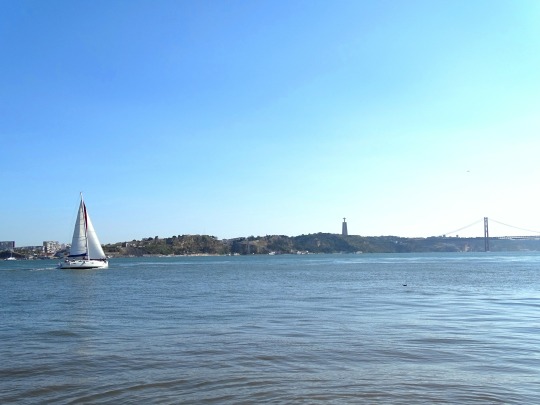
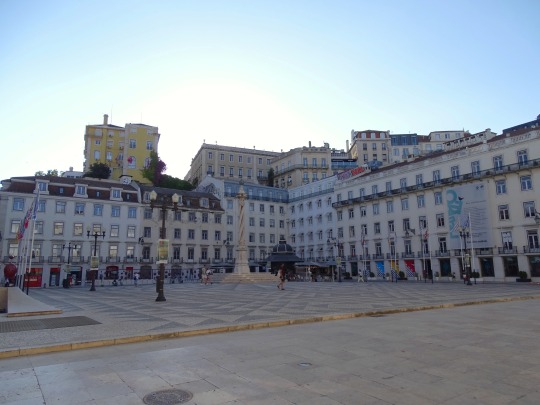


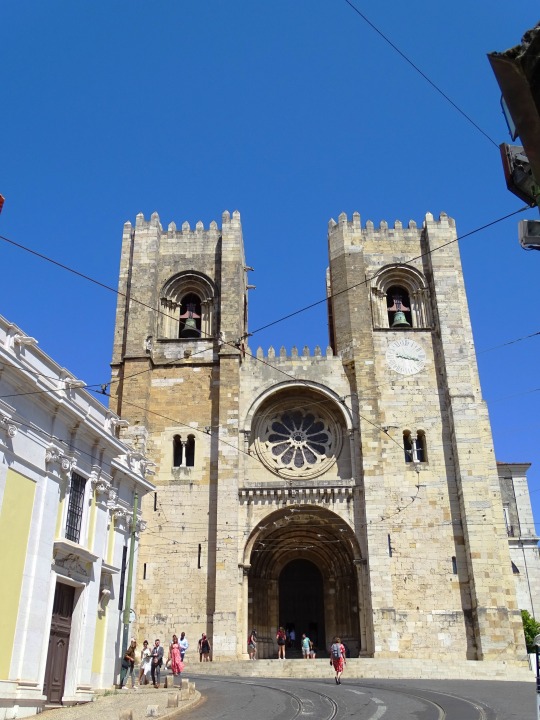




The Carnation Revolution (Portuguese: Revolução dos Cravos), also known as the 25 April (Portuguese: 25 de Abril), was a military coup by left-leaning military officers that overthrew the authoritarian Estado Novo regime on 25 April 1974 in Lisbon, producing fundamental social, economic, territorial, demographic, and political changes in Portugal and its overseas colonies through the Processo Revolucionário Em Curso. It resulted in the Portuguese transition to democracy and the end of the Portuguese Colonial War.
#Praça do Município#Praça do Comércio#25 de Abril Bridge#Rossio#D. Maria II National Theatre#São Jorge Castle#Monument of the Discoveries#Belém Tower#Tajo River#Lisbon Cathedral#Carnation Revolution#Revolução dos Cravos#25 April 1974#anniversary#Portugese history#Lisbon#Lisboa#Portugal#summer 2021#tourist attraction#landmark#cityscape#architecture#original photography#Southern Europe
5 notes
·
View notes
Text
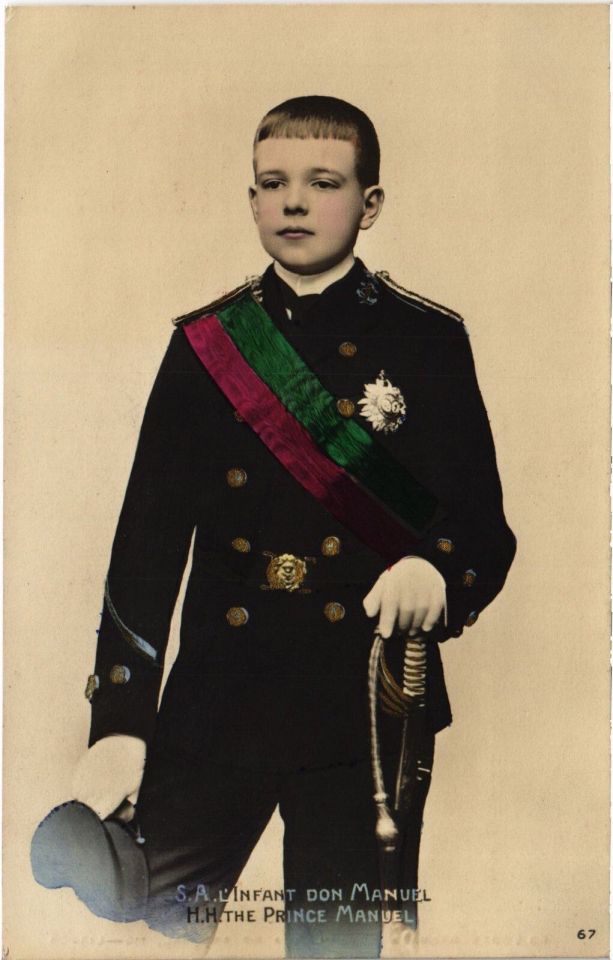
Prince Manuel Maria Filipe Carlos Amélio Luís Miguel Rafael Gabriel Gonzaga Xavier Francisco de Assis Eugénio of Bragaza, later King Manuel II of Portugal
Portuguese vintage postcard
#historic#briefkaart#maria#postkaart#carte postale#manuel#ephemera#xavier#miguel#francisco#tarjeta#photo#filipe#postcard#postal#portuguese#amlio#postkarte#assis#manuel ii#prince#later#king#ansichtskarte#rafael#bragaza#carlos#portugal#gonzaga#gabriel
4 notes
·
View notes
Photo
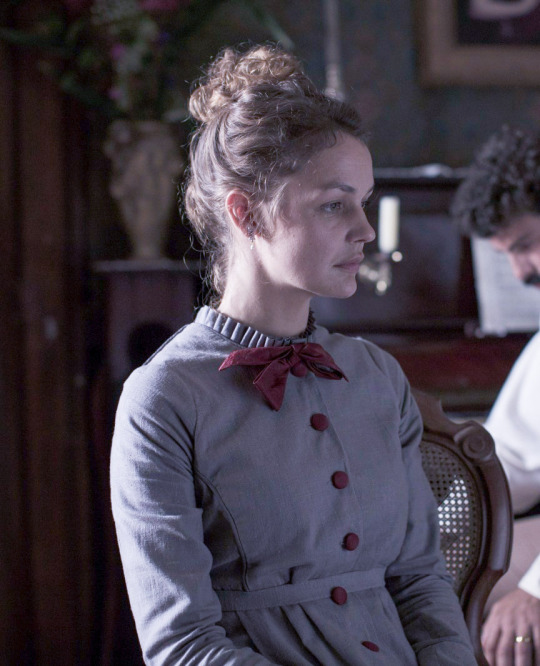

Luise Heyer as Maria Leopoldina of Austria, the Empress Consort of Brazil, Queen Consort of Portugal and Archduchess of Austria
Dona Maria Leopoldina of Austria (22 January 1797 – 11 December 1826) was born Caroline Josepha Leopoldine Franziska Ferdinanda of Habsburg-Lorraine in Vienna, Austria, Holy Roman Empire. She was the daughter of Holy Roman Emperor Franz II and Empress Maria Theresa of Naples and Sicily. In 1817 the Archduchess married Prince Dom Pedro of Braganza (12 October 1798 – 24 September 1834), heir to Portugal, later the Emperor Dom Pedro I of Brazil and King Dom Pedro IV of Portugal. The couple had 7 children: Queen Maria II of Portugal, Miguel, Prince of Beira, João Carlos, Prince of Beira, Princess Januária of Brazil, Princess Paula of Brazil, Princess Francisca of Brazil and Emperor Dom Pedro II of Brazil. On September 2, 1822 while she was the Acting Princess Regent of the Kingdom of Brazil in the absence of her husband Maria Leopoldina signed the Decree of Independence, declaring Brazil separate from Portugal. She died at age 29 in 1826 after a miscarriage. As Acting Regent Maria Leopoldina was the first woman to govern an independent Brazil, the first empress consort of the country, the first empress of the Americas and the first woman to govern an independent American country.
Victoria Guerra as Amélia of Leuchtenberg, the Empress Consort of Brazil and Duchess of Braganza
Dona Amélia of Leuchtenberg (31 July 1812 – 26 January 1873) was born Amélie Auguste Eugénie Napoléonne de Leuchtenberg in Milan, Kingdom of Italy. She was the daughter of Eugène de Beauharnais, Duke of Leuchtenberg and Princess Augusta of Bavaria, Duchess of Leuchtenberg. She was the second wife of Emperor Dom Pedro I of Brazil after their marriage in 1829 and they had one child, the Princess Maria Amélia of Brazil. After Dom Pedro I abdicated the Brazilian crown, Amélia accompanied her husband back to Europe. They held the titles of Duke and Duchess of Braganza until Pedro’s dead in 1834. Amélia died in Lisbon at the age of 60 in 1873.
A VIAGEM DE PEDRO | PEDRO, BETWEEN THE DEVIL AND THE DEEP BLUE SEA (2021). Dir. Laís Bodanzky
#a viagem de pedro#perioddramaedit#filmedit#movieedit#weloveperioddrama#worldcinemaedit#perioddramasource#onlyperioddramas#historicwomendaily#periodedits#braziliansource#cinematv#cinemapix#fyeahmovies#motionpicturesource#filmtv#filmtvdaily#userperioddrama#femaledaily#femalecharacters#flawlessbeautyqueens#historyedit#women in history#period drama#pedro between the devil and the deep blue sea#brazilian cinema#brazilian movies#mine#mine: edit#brazilian stuff
73 notes
·
View notes
Photo

francisca de bragança, a princesa de joinville, por franz xaver winterhalter, 1844.
francisca carolina joana carlota leopoldina romana xavier de paula micaela rafaela gabriela gonzaga de bragança [rio de janeiro, 2 de agosto de 1824 — paris, 27 de março de 1898], foi a quarta filha do imperador pedro i do brasil, e da imperatriz consorte maria leopoldina da áustria, sendo assim, irmã do imperador pedro ii do brasil, da rainha maria ii de portugal e, membro do ramo brasileiro da casa de bragança.
28 notes
·
View notes